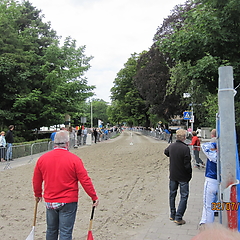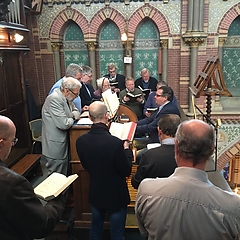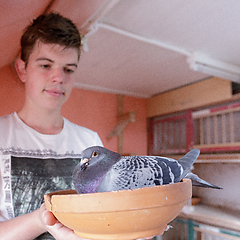The koto is an outfit that many people see as the national festive costume of Afro-Surinamese women. The most important part of the koto is a long skirt. The excess length of the skirt is used to make a large fold, the kotobere. At festive occasions it is padded, to make the koto spread out wide and to highlight the hips. The outfit consists further of a loose-fitting, white cotton shirt, the empi. This is often ornated with embroidery or lace and worn with a jacket, a jaki. The jaki is always lined and has two white straps hanging at the backside, which may be folded accordion-wise. A wrap (toepoeskingpangi) is worn over one shoulder and an angisa on the head. For this purpose a three square feet wide cloth is starched as stiff as a shelf. Then it is folded diagonally into a triangle. The diagonal fold is once more folded two inches. This last fold adds firmness to the angisa. The cloth can then be wrapped in different ways, while the fabric is secured with straight pins. A well-folded angisa is put on and off like a hat. The folding method, the way the straps on the back of the jaki are folded and the way in which the pangi (a cloth) is worn over the shoulder, say something about the emotional state of the wearer or have a symbolic significance. Many women wear the angisa without the traditional koto. There is also a special version of the koto for times of mourning. The wrap is then worn over both shoulders, and the angisa – which is made without use of pins during mourning – is worn deep down over the eyes. The colour of a mourning koto is white.



